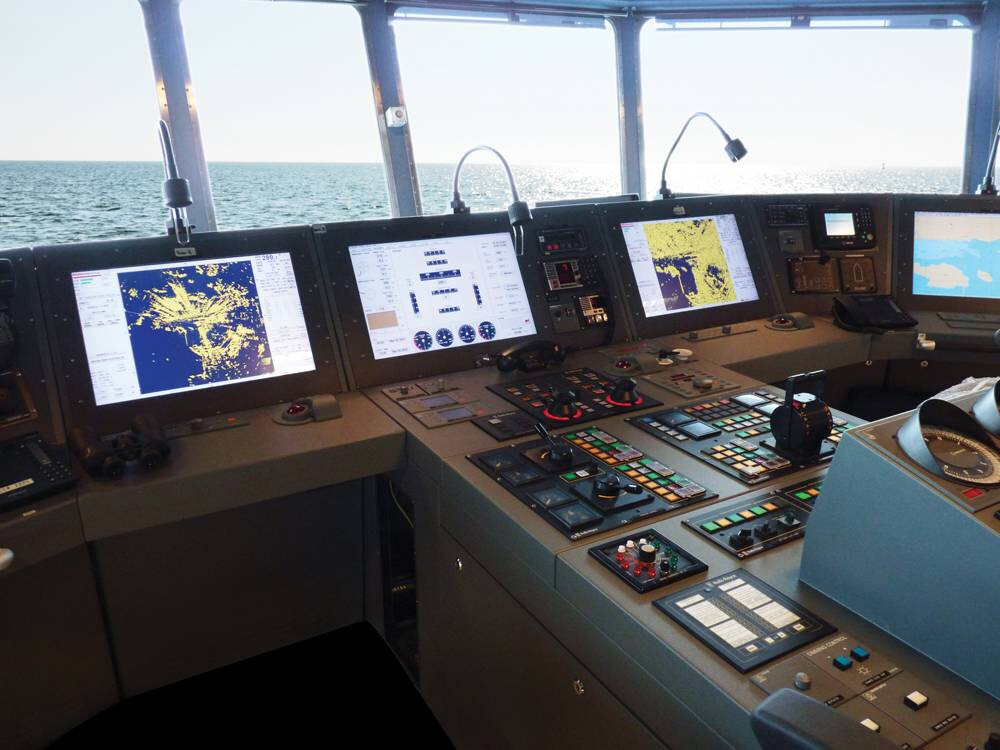
The Maritime and Port Authority of Singapore (MPA) has issued guidelines encouraging shipowners, managers, masters, and officers to enhance their understanding and utilization of Electronic Chart Display and Information Systems (ECDIS) and Electronic Navigational Charts (ENCs) to establish safe, efficient, and compliant navigational practices.
The International Maritime Organization’s (IMO) Maritime Safety Committee (MSC), at its 106th session, approved the revised MSC.1/Circ.1503/Rev.2, namely the ‘Guidelines on good practice for the use of ECDIS’, which was annexed to the MSC circular. The MPA strongly recommends that owners, managers, masters, and officers of ships fitted with ECDIS utilize these guidelines to improve their understanding of ECDIS and promote its safe and efficient use.
Emphasis on the Importance of ECDIS Training
Masters and officers on ships fitted with ECDIS must have thorough knowledge and proficiency in the use of ECDIS for safe and efficient navigation. They should have completed generic ECDIS training approved to meet the competency requirements specified in the STCW Convention and the 2010 Manila Amendments to the STCW Code. Additionally, they should receive equipment-specific familiarization training to gain operational knowledge of the particular model of ECDIS installed on board their ship.
Appropriate material provided by ECDIS manufacturers (e.g., courses at shore-based ECDIS training centers, e-learning via DVDs or similar means) may be recognized as part of the equipment-specific familiarization training. ‘Cascade’ training (i.e., one officer on board informally training another) is not acceptable. If equipment-specific familiarization training is conducted on board, it should be properly structured, provided by a dedicated training officer, and cover all functions and effective use of the system. The equipment-specific familiarization training provided to officers should be appropriately documented in the ship’s Safety Management System.
If generic training on the specific type and model of ECDIS installed on board a ship has been conducted ashore, it may be recognized as meeting both the generic and equipment-specific training requirements. In such cases, this should be appropriately recorded in the ECDIS training certificate.
Clarification of Requirements for Electronic Navigational Charts (ENCs)
The MPA permits the carriage of Electronic Navigational Charts (ENCs) in lieu of paper charts, as required by SOLAS Regulations V/19.2.1.4 and V/27. SOLAS Regulation V/19.2.1.5 further requires that if ENCs are used to meet the chart carriage requirements, a back-up arrangement should be provided. However, emergency publications such as the International Code of Signals and the IAMSAR Manual Vol. III should be immediately available in paper form.
When ENCs are used on board ships, the following requirements must be complied with:
The ENC must be issued by a hydrographic office authorized by the Administration (e.g., the UK Hydrographic Office) or a relevant government-intergovernmental organization (e.g., IMO, ITU).
The ENC must be maintained to the latest available edition and kept up to date with promulgated corrections.
An appropriate independent back-up arrangement must be in place.
The ENCs of both the primary and the back-up systems should be accessible without restriction from the conning position by the officer of the watch (OOW).
The computer used should be dedicated to ENC provision and should have an uninterrupted power supply from both the main and emergency sources of electrical power.
Key Focus Areas for Port State Control
As ECDIS and ENCs are critical elements of navigational safety, Port State Control Officers may pay particular attention to the following issues (but not limited to) during Port State Inspections:
Appropriate certification to verify compliance with IMO performance standards (e.g., inclusion of ECDIS/ENC in equipment records and certificates).
Availability of the latest edition and updated folio of electronic charts and ENCs for the intended voyage.
Availability of the latest updated versions of the ECDIS software and the software used in the ENC viewer computer.
Provision of an appropriate independent back-up arrangement in accordance with SOLAS requirements.
Documentation of procedures for the use of ECDIS/ENC and records of periodic checks in accordance with the ship’s Safety Management System.
Consistency and accuracy of inputs from various sensors (e.g., heading, speed, rate of turn, etc.) with the ECDIS display.
Availability of documentation relating to the generic and equipment-specific familiarization training of the ship’s navigators.
Demonstration of the ship’s navigators’ ability to use the ECDIS and ENCs.
Emphasis on the Obligations of Shipowners and Managers
STCW Convention Regulation I/14 and the International Safety Management (ISM) Code Sections 6.3 and 6.5 require companies to provide seafarers with appropriate ship-specific familiarization training in the operation of the ship’s navigational equipment, including the use of ECDIS and ENCs. The MPA requests shipowners and managers to bring the content of this circular to the attention of masters and officers of Singapore-registered ships.
This enhanced guidance from the MPA is seen as a proactive measure to ensure safe navigation and strict adherence to international regulations in an increasingly complex maritime environment where the importance of ECDIS and ENCs is growing. In particular, by raising the quality of ECDIS training and emphasizing the accurate and up-to-date maintenance of electronic charts, it is expected to significantly contribute to the prevention of maritime accidents. Furthermore, by clearly outlining the inspection points related to ECDIS and ENCs during port state control, it aims to encourage voluntary safety management efforts by ships and support efficient inspections by port authorities.
Maritime safety experts assess that the MPA’s guidelines will play a crucial role in raising the standards of ship operation and reducing the risk of maritime accidents, emphasizing that other maritime authorities should also develop similar guidelines to strengthen international maritime safety standards.
[Copyright (c) Global Economic Times. All Rights Reserved.]



























